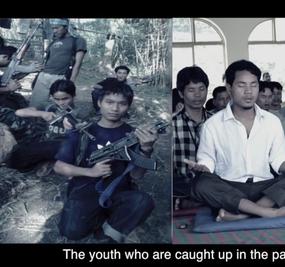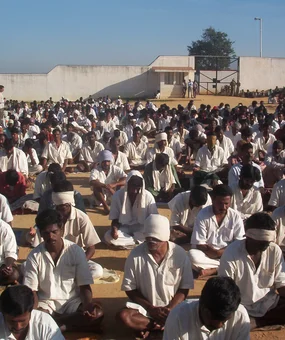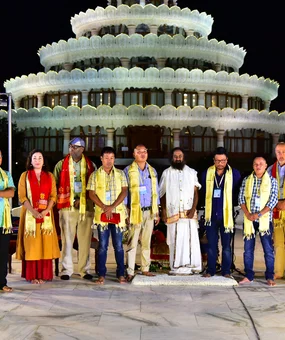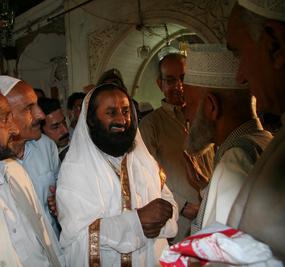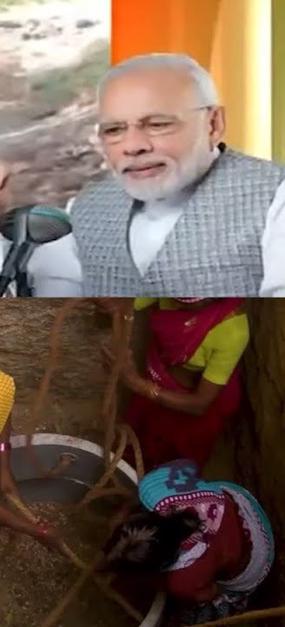During the violent riots that engulfed Assam, India, in 2012, the Art of Living volunteers responded swiftly and brought to bear extraordinary acts of solidarity from the warring locals. While the violence tore through communities, displacing over 300,000 families and claiming lives, stories of unity, belongingness, and perseverance also began to surface.
The Art of Living’s Swift Response to Crisis
Udalguri, the epicenter of the conflict in Bodo land, bore witness to acts of harmony and camaraderie, amidst the hatred and chaos. Volunteers from The Art of Living, the ‘yuvacharyas’, did the exceptional task of convening the Bodos, Muslims, Christians, and tribals as a team working together as guardians. They stood up together as protectors, preventing rioters from infiltrating their villages and shielding their homes from destruction.
Their actions exemplified the power of solidarity and perseverance – which was nothing less than a miracle in such times of insurrection.
When the riots hit, The Art of Living was the first organization that the All Bodo Students Union (ABSU) contacted. Over 400 volunteers from The Art of Living sped to the riot-affected areas in Assam and set up trauma care centers for the victims. These centers housed locals from all communities; Muslims, Hindus, Christians… the local Bodos. Much-needed humanitarian aid was also distributed by The Art of Living volunteers.
The Art of Living founder Gurudev Sri Sri Ravi Shankar visited these relief centers and met with the affected locals. He immediately called for a series of meetings with representatives of various stakeholders including the ABSU, Bodo People’s Front, and scholars from the Kokrajhar University to deliberate on strategies for ending the violence and devising a lasting, sustainable resolution.
Giving a Sense of Purpose to the Youth in a Post-Riot Assam
The energy among the youth in the northeastern regions is abundant but often misdirected. Many find themselves unemployed. Their idle minds are susceptible to violence and recruitment by militant groups, squandering their potential. Gurudev realized that it was imperative to transform this negative energy into positive pursuits.
Guidance and a sense of purpose were essential to redirect their energies effectively. This was precisely the mission undertaken by The Art of Living through its specially designed holistic programs for the youth. These programs are designed to break through personal barriers and empower the youth.
Countless young individuals once susceptible to militancy have found rehabilitation and purpose through these programs. Deepak Sharma, a dedicated teacher and trustee of Sri Sri Rural Development Program (SSRDP) recounted the organization’s longstanding commitment to the region.
“The Art of Living has been working closely with the Bodos, especially their student unions, for the last decade,” says Deepak Sharma. Most of these youths have undergone the Yes!+, Youth Leadership Training Program, Rural DSN (Divya Samaj ka Nirman), Nav Chetna Shibir, and several such Art of Living workshops. These programs give youth a sense of purpose for their self and a drive to give back to the community.
“We have also conducted workshops for one of the biggest militant outfits in the Northeast. We have started four schools for the tribals in the region” explains Deepak ji. “No more hiding in jungles. It has happened only through the interventions of our workshops. The government has also recognized this. Over 240 militants from Assam were sent to the Bangalore Ashram for our 35-day rehabilitation and training processes. Wonderful and powerful were their experiences.”
Deepak Sharma explains that earlier due to fear, people seldom ventured out after 6 PM and avoided opening their doors at night. However, after participating in our workshops, meditations, and satsangs, they began to emerge from their isolation, engaging socially and gradually developing trust, a phenomenon previously unseen in this demographic.”
The impact of all these workshops is evident, as locals once swayed by negative influences have become active contributors to their communities – a testament to the transformative power of having purpose and direction in life.
Building Sustainable Livelihoods as a Long-Term Solution
Thinking ahead and recognizing the urgent need to provide youth with a livelihood that is sustainable, The Art of Living embarked on a mission to establish regional training and development centers. These centers impart vocational and soft-skills training along with teaching spiritual practices.
They provide a blend of skills and livelihood training, such as electrical work, welding, mechanics, sanitary services, organic farming, construction, and education. Additionally, they teach spiritual practices like meditation, breathing techniques, yoga, and Sudarshan Kriya as the Art of Living believes that those are central tools for overall growth.
In response to the growing importance of sustainable farming practices, the centers have integrated training modules focused on organic farming techniques. Six zero-budget farming experts are already working with the locals for sustainable farming.
“We have tied up with Schneider Electric India and L&T to initiate programs on electrical mechanics and construction. The SSRDP trust of the Art of Living will be setting up a rural development and vocational center in Kokrajhar—the most riot-affected area—in association with the All Bodo Students Union and the Government,” says Deepak Sharma, who met with the Students Union.
Additionally, The Art of Living continued its mission to bridge the gap between the Northeast and the rest of India. Volunteers, including skilled instructors, routinely travel into the heart of Assam, engaging with communities and imparting valuable marketable skills. Their efforts aim not only to rebuild lives, but also to foster a sense of interconnectedness among people.
Deepak ji adds that these transformations are not merely the result of financial assistance or motivational speeches; they have been achieved through Gurudev’s vision of a violence-free society and the practices of The Art of Living. Central to The Art of Living’s approach is the belief in the power of love and spirituality to heal wounds. Spiritual processes designed by the organization nurture connections and a sense of belonging and purpose among participants.
This story of Assam serves as a reminder of this transformative power of solidarity and a sense of purpose. Through their unwavering commitment to peace and development, The Art of Living volunteers have illuminated a path toward healing, painting the canvas of life with hues of hope and harmony.




